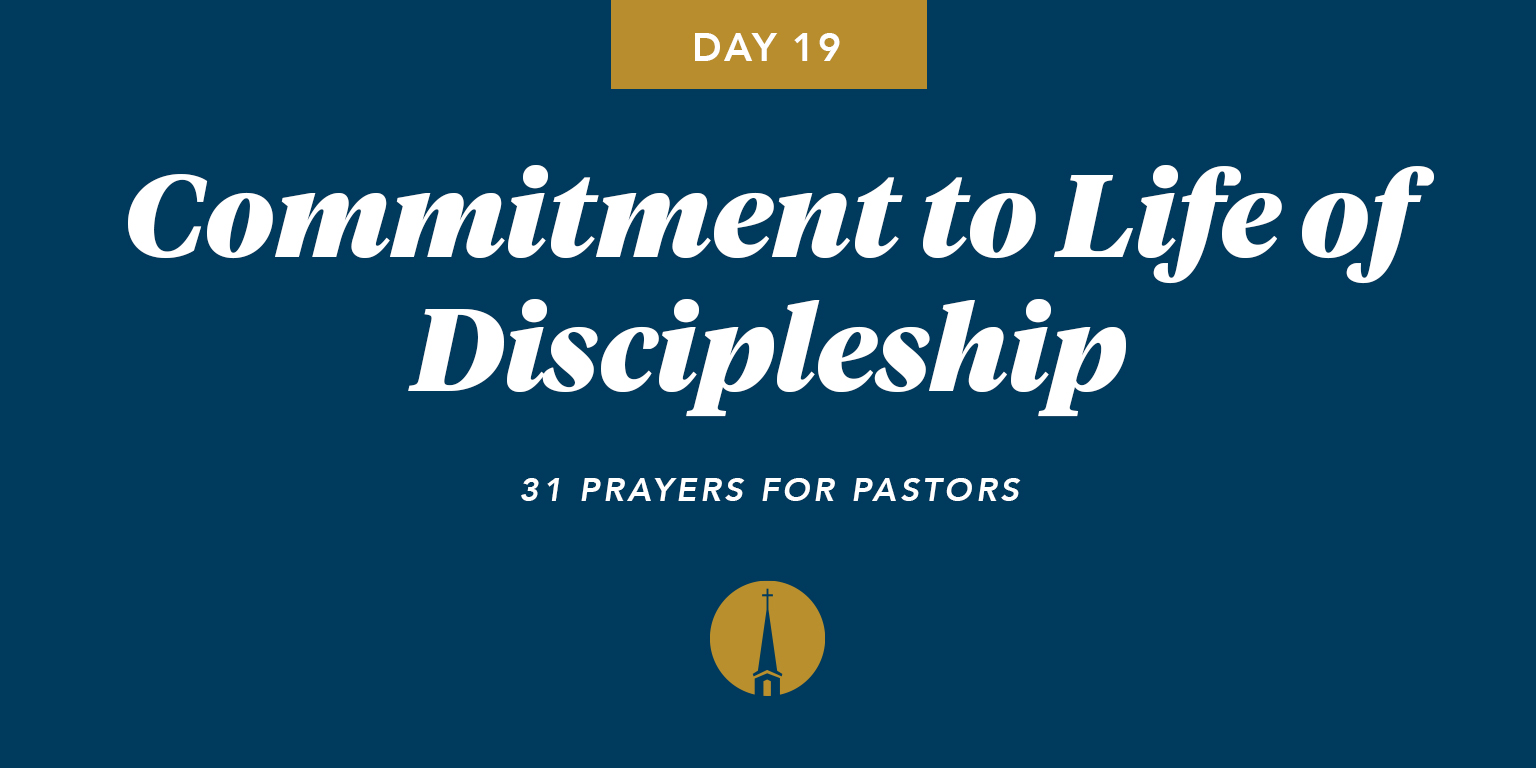
”And Jesus came and said to them, “All authority in heaven and on earth has been given to me. Go therefore and make disciples of all nations, baptizing them in the name of the Father and of the Son and of the Holy Spirit, teaching them to observe all that I have commanded you. And behold, I am with you always, to the end of the age.”
– Matthew 28:18-20
Day 19 – Commitment to Life of Discipleship
The heart of God’s vision for His church is summarized in Matthew 28. The call for believers is to “make disciples.” This exhortation from the Lord should motivate all believers to a life of discipleship, to a life centered around growing in Christlikeness alongside likeminded believers.
The cost of discipleship is known to be costly, but the cost of non-discipleship is even greater. That’s why we need to pray that our pastors will model and lead in a way that prioritizes discipleship.
As you pray for your pastor today, consider praying for him in these ways:
- A heart for the Great Commission
- Relationships that mentor and disciple the pastor
- Recognition of the importance of discipleship in the life of the believer
- Ability to live out disciple-making and discipleship among the congregation
Prayer Prompt
Lord, I pray that my pastor (for a church member)/ I (as a pastor) will be a pastor who models “being a disciple who makes disciples.” In his daily life, I pray he will model and follow the Great Commission in all areas of his life. Give him a peer community that offers his own discipleship so that he may pour into his church in the same way…
*These prayers are a part of our series of prayers for pastors during Pastor Appreciation Month. A new prayer will release every morning throughout the month for pastors and their members to reflect on and pray.

